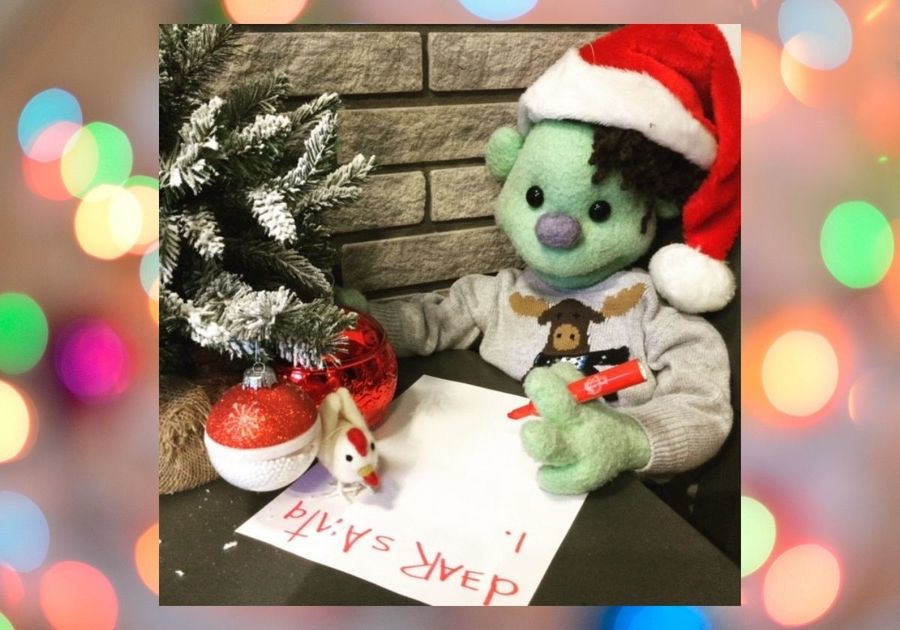- MAKE THE MOST OUT OF YOUR AMAZON BOX: Adults and kids are alike; we all feel a spark of excitement when we see a box at our doorstep Turn it into a language-rich activity with your child. First, get your child involved. Ask your child to help you carry and open the box. Add language to your actions. Try using comments such as “Look there’s our box. Pick it up. Let’s carry the box. Open the box. Peek in.” Label items as you take them out of the box. Once you are done, let your child play with the box. Young children love to play and make things with boxes. Boxes can be made into toys or musical instruments.
- OH, CHRISTMAS TREE! Did you put your tree yet? When you do, turn this family activity into a language rich opportunity. With little ones, name objects (e.g., tree base, ornament, lights, stars, decoration, wreath, sugarcane, garland) and actions (e.g., want, choose, hold, hang, put, help). Add concepts words (e.g., on/off, up/down, behind/front, high/low, first/then, first/last). Expand on your child’s words by turning them into sentences. If your child says “branch”, add a few more words: “On the branch. The star goes on the branch.” Even when your child says a full sentence (e.g., “I love this ornament.”), you can still add words or ideas to it: “You love this shiny ornament the most. I think this ornament reminds you of Santa’s reindeer's.”
- SING HOLIDAY SONGS: Songs build language. They help children make sounds, talk, move, listen, follow directions, and remember new words especially when repetition and actions are part of the songs. Singing can be done anywhere - in the car, in the bath, on a walk. Younger kids can learn a new holiday song based on a familiar tune – try the Lights on the tree (e.g. The Wheels on the bus). Focus on a new holiday song for older children (e.g. I want a hippopotamus for Christmas) and repeat it often. Repetition helps your child learn new words, understand new concepts, and learn the full sentences of a song. If they want to hear the same song one more time, don’t be afraid to start over. Sing traditional holiday songs in your first language. Take time to explain new words and talk about the story behind the song.
- GET INTO THE HOLIDAY SPIRIT: Sometimes, the simplest daily activity offers the best opportunity to stimulate language development. Talk while you are baking and decorating holiday cookies. While making their toy list, get your child to identify the reasons why they like each toy. Ask your child to prioritize and choose his 5 top picks. Talk through difficult choices (if your kid is anything like mine, there will be plenty of heartbreaking choices to make between the “Spiderman who can cling to walls or the other cool Spiderman shooting REAL spider webs”). These types of conversations in everyday activities help your child build strong reasoning and problem-solving skills through language.
- SET UP SANTA’S SHOP IN YOUR LIVING ROOM FOR “LITTLE HELPERS”: Pretend play is a great way to build language skills. Get your child to pick toys from his toy bin and wrap them up for a friend, a sibling, or a family pet. With tape and paper at hand, wrap up the toys and put them under the tree. Pretend it's Christmas day and open up the presents. Talk about what your child can do with each toy. Use action words (e.g., bounce, cook, draw). Compare two similar toys (e.g., “The car and the truck are similar. We can drive both.”)
- WRITE SANTA A LETTER: Help grow your child’s literacy skills by making lists or writing a letter to Santa. Focus on early literacy conventions such as writing from left to right, starting at the top of the letter, listing items from top to bottom. Show your child to start the letter with “Dear Santa”, write the list in the body of the letter and finish the letter with their name/signature. Show them how to put the address on the envelope. Draw your child’s attention to the printed word and the first letter of each word listed beside the picture of the toy. Get them to think about the sound that letter makes.
- KEEP IT GOING UNTIL THE HOLIDAY. Continue to talk through daily routines with your child. Get your child thinking and predicting real-life or silly situations: “What will Santa say when he sees our tree?”, “What would happen if Kitty Cat jumped into the tree?” and so one. These types of conversations build reasoning and problem-solving skills. Play simple games. For example, get your child to follow directions such as “Find the reindeer ornament. Put it beside the star ornament. Let’s put the star on top of the tree.” Don’t forget to cozy up and read books about Santa, reindeers and holidays.
Conversations in everyday activities help build language and literacy skills.
Recognizing speech and language problems early on is the best approach! Check out our First Words Communication Checkup tool to know if your child is meeting communication milestones. Refer online if necessary. For more information, visit www.firstwords.ca or call Ottawa Public Health at (613) PARENTS.


